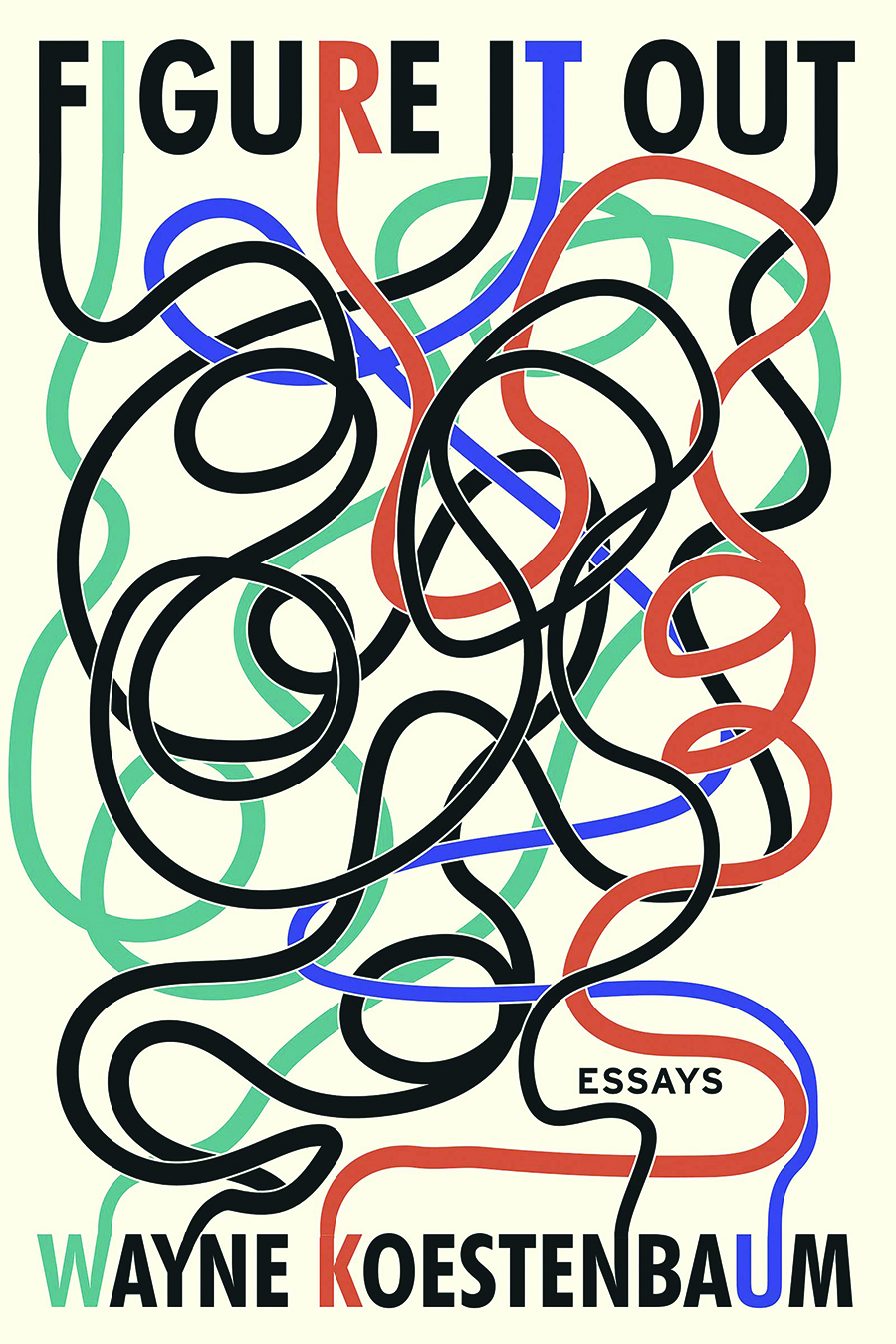“Recently I started using Instagram,” Wayne Koestenbaum writes in one of the essays from his latest collection, Figure It Out. On his (since-deleted) account, he posts a digital collage of a photo of Omar Sharif Jr., “an openly gay star who happens to the grandson of a more famous actor,” juxtaposed with the title page of Jean-Paul Sartre’s Being and Nothingness. To Koestenbaum’s wonderment, Sharif’s own account “likes” the post:
For the younger, more myopic essayist, this would be the beginning of a journey with several pages left to go. But Koestenbaum has already moved on to a different interesting thought. Indeed, the internet plays a marginal role in his intellectual cosmos. It’s lucky to be included at all.
Koestenbaum’s 2013 collection My 1980s and Other Essays introduced the professor, poet, critic, novelist, opera composer, painter, piano player, and singer to a general readership. The essays, which spanned from 1996 to 2012, contained such erudition, nuance, and candor that critics bestowed upon Koestenbaum that most exalted, if overused, honorific for an essayist: comparison to Montaigne. He is certainly inviting like Montaigne, culling interest in his subjects where interest might never before have existed. He is aided by a malleable form that utilizes traditional paragraphs, fragments (called “crots,” a term he learned from John Barth), and even imagined transcripts. His style is sensuous and analytical yet concrete and personable — like Walter Pater if he’d left the house more often.

It is refreshing to find that Koestenbaum’s tentative adoption of the internet has not affected this recent crop of essays. He still writes about whatever he pleases in whatever way he pleases, untouched by the fickle appetites of digital culture. His wheelhouses — literature, art, celebrities, pornography, advice to readers, and personal reflections — are all intact. If there is an overarching theme to this collection, I am either too distracted or not intelligent enough to siphon it out. His essays on John Barth, Robert Rauschenberg, Adrienne Rich, and his academic colleague Eve Kosofsky Sedgwick identify him as a postmodernist. But in practical terms, he is merely eclectic: Even within a single essay, he refuses to stay in one place. In “My New Glasses,” for instance, the titular glasses are but a launching point for Koestenbaum to discuss the glasses of an art curator he once had a crush on, “the transvaluation of nerd” from its awkward stereotype to a more “alluring” chic, and a lost pair of glasses that resembled Get Smart’s Barbara Feldon by turning her “sidekick mentality — her underratedness — into a square entity, an abstraction.”
Koestenbaum is a master of the English sentence. “Sentences demand aviation: adrenaline and anxiety provide horsepower for my freakish, impossible flight.” They are the kinds of sentences I was dejected not to have written but delighted to discover anyway. “A toilet bowl plunger qualifies as quiescence.” “Melancholy may be sexuality’s unwanted supplement, or its beseeched-for authorization stamp.” “Consider the two essays mismatched nipples.” “It’s possible to read any of [Susan Sontag’s] sentences as a round-trip flight between pleasure and task.” “The comma is the cocaine.”
“Barth told us we needed to decide whether we believed in stained glass or Windex,” Koestenbaum writes in “My Brief Apprenticeship With John Barth.” Writers of stained glass “considered their texts to be embroidered opacities that concealed reality.” Windex writers thought “language was a transparent glass that gave unflicked access to the face of things.” Koestenbaum, it is evident, considers himself to be stained glass, “though today I feel very Windex.”
These Windex moments come when he chooses to address the reader directly, as with his “assignments,” in which he dispenses creative prompts and general advice. “In a crowded museum, stand in front of a painting for fifteen minutes and write a poem that includes all the phrases you overhear from fellow museumgoers. Don’t describe the painting.” Or, “Take notes while talking to someone on the phone. Afterward, transform your notes into a story.” Others are moral directives: “Don’t interrupt people when they’re in the middle of talking, unless they’re unrepentant loudmouths, dying for correction.” And others are therapeutic:
“If you have never read [Adrienne] Rich,” he writes in one of his more conventional essays, published first in the New York Times Book Review, “begin with ‘Storm Warnings.’ Read it aloud. Try to imagine a country where a poet like Rich is the lauded anchor a populace could trust, in a quest for policies more solid than superstitions.” I actually followed this advice right after finishing the essay. The first half of it, anyway.
That a graduate-level professor is able to avoid didacticism without sacrificing wisdom is impressive in itself. But it is all the more so amid a swell of cultural criticism that grips onto theory for dear life only to choke on it. Koestenbaum seems somewhat alien in this milieu. His writing is not heavy on politics, mostly because he seems to believe that questions of morals and individual freedom were settled in the ‘70s. His libidinal frankness, often humorous and never exhibitionist, has an ease that seems to come from another time.
In the present context, Koestenbaum conjures “a ghost in marble,” Samuel Taylor Coleridge’s assessment of Jeremy Taylor’s beautiful but, in his estimation, hollow prose. But like Koestenbaum’s work, a single passage of Taylor’s — such as, “We are as water, weak, and of no consistence, always descending, abiding in no certain place, unless we are detained with violence …” — can have an effect that resists fashion and replication. Its poetry can carry far.
Chris R. Morgan is a writer from New Jersey. Follow him on Twitter: @CR_Morgan.

